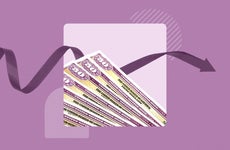New Series I bond rate rises to 5.27% – Is it a good time to buy?

The Bankrate promise
At Bankrate we strive to help you make smarter financial decisions. While we adhere to strict , this post may contain references to products from our partners. Here's an explanation for .
The U.S. Treasury has announced that it’s raising the interest rate on the popular Series I bond to 5.27 percent, helping to offset the effects of inflation. The new rate applies to the government-backed bonds issued between November 2023 through April 2024.
The new rate is up from the 4.3 percent rate on bonds issued from May to October this year. Investors who are new to Series I bonds can claim the higher rate by purchasing and registering the bonds through April. They’ll enjoy that rate for a full six months.
Investors with existing bonds at the lower 4.3 rate will automatically receive the new rate when their current six-month period ends. Then they’ll enjoy that rate for a full six months.
How do Series I bonds work?
Series I bonds have been a popular choice for individual investors in the last few years because they build in inflation protection. The bonds have a base interest rate and the Treasury announces an inflation adjustment semiannually that is paid in addition, ensuring that your payout stays on track with recent inflation rates.
While the new 5.27 percent rate is higher than before, it’s still well below the 9.62 percent offered in 2022. The decline in the Series I bond rate reflects falling inflation.
Series I bonds cannot be cashed for the first 12 months after purchase, and if you redeem one in the first five years, you’ll pay the last three months of interest as a penalty.
Any American or U.S. resident can purchase up to $10,000 in electronic I bonds directly through the U.S. Treasury via Treasury Direct. But there are little-known other ways to buy more.
Series I bonds also provide some tax advantages. Interest on the bonds is exempt from state and local income taxes, so you’ll owe taxes on them only at the federal level. Using the bond’s interest to pay for education may also enable you to avoid paying even federal tax, too.
Is it a good time to buy Series I bonds?
If you’re thinking about investing in Series I bonds, you’ll want to consider the factors above, as well as your own financial situation.
As a savings bond, Series I bonds are not subject to principal risk, meaning you’ll always get your principal back. In contrast, the price of standard Treasury bonds fluctuates with the prevailing interest rate. So if you need to sell a Treasury bond before maturity, you may receive less than you pay for it. That said, buying discounted Treasury bonds may offer more upside.
You’ll also want to consider whether you’re able to lock your money up for at least a year and are then willing to pay a penalty of three months’ interest if you redeem the bond in the first five years. If you’ll need your money in less than a year, then you’ll need to pass on Series I bonds.
While you may like the Series I bond rate, it’s important to look around and see what else is out there. You can get higher headline interest rates – though without the extra tax advantages – with one of the nation’s best CD rates instead. A CD may be a better pick for those who need a return with no principal risk and they get to tailor their CD term for when they need the money.
Editorial Disclaimer: All investors are advised to conduct their own independent research into investment strategies before making an investment decision. In addition, investors are advised that past investment product performance is no guarantee of future price appreciation.
Related Articles


With mortgage rates soaring, is it still a good time to invest in real estate?

